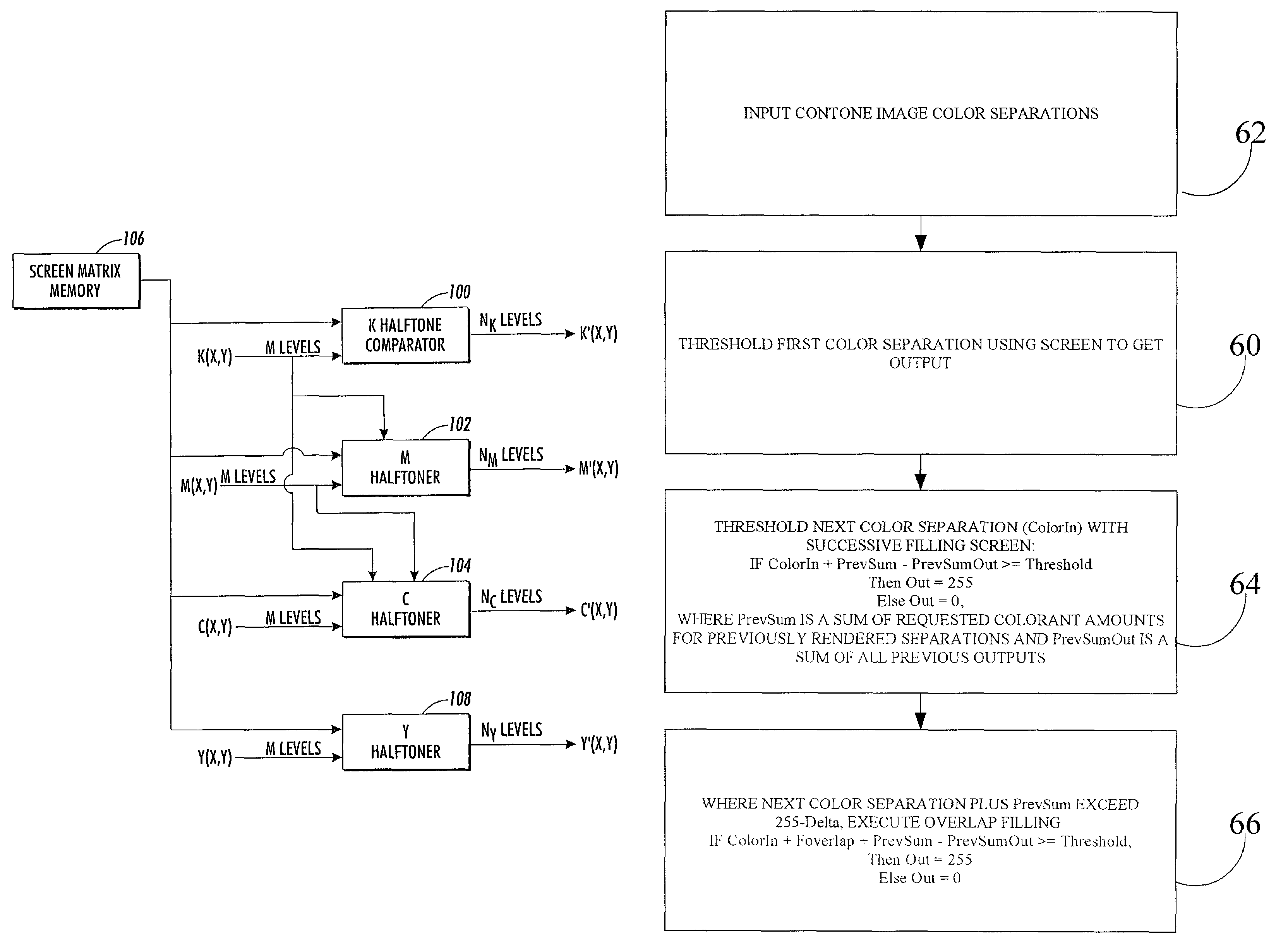Color vector halftoning using a successive filling with improved color registration latitude
- Summary
- Abstract
- Description
- Claims
- Application Information
AI Technical Summary
Benefits of technology
Problems solved by technology
Method used
Image
Examples
Embodiment Construction
[0030]Referring now to the drawings wherein the showings are for purposes of illustrating preferred embodiments of the invention only and not for limiting same, the invention describes a way of halftoning a color image using a single stochastic screen. The different separations are processed in order of decreasing luminance modulation (i.e., successive separations produce smaller and smaller changes in luminance, for printing this order is from the darkest printing separation to the lightest) and are biased so as to target different thresholds of the stochastic screen. The biasing is done so as to achieve three objectives: (1) “area coverage” for each color is preserved, (2) the inks are maximally dispersed, i.e., there is no overlap unless necessary and overlap of lighter inks occurs before overlap of darker inks, and (3) the spatial frequency optimization of the stochastic screen is used optimally by having the darkest dots occupy the lowest thresholds.
[0031]A principal feature of...
PUM
 Login to View More
Login to View More Abstract
Description
Claims
Application Information
 Login to View More
Login to View More - R&D
- Intellectual Property
- Life Sciences
- Materials
- Tech Scout
- Unparalleled Data Quality
- Higher Quality Content
- 60% Fewer Hallucinations
Browse by: Latest US Patents, China's latest patents, Technical Efficacy Thesaurus, Application Domain, Technology Topic, Popular Technical Reports.
© 2025 PatSnap. All rights reserved.Legal|Privacy policy|Modern Slavery Act Transparency Statement|Sitemap|About US| Contact US: help@patsnap.com



